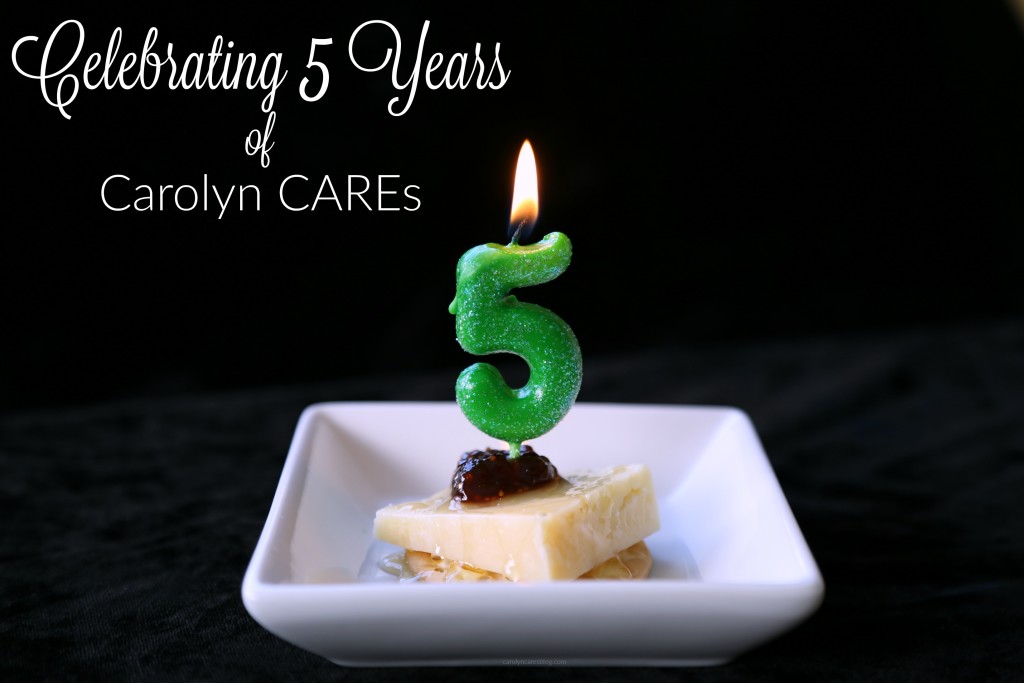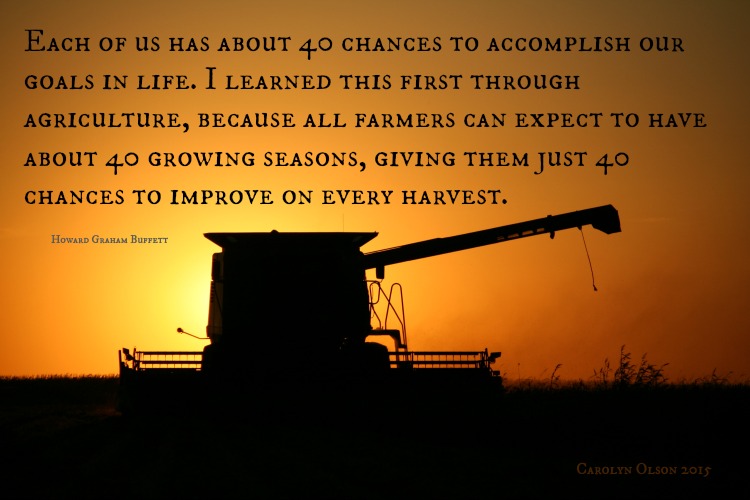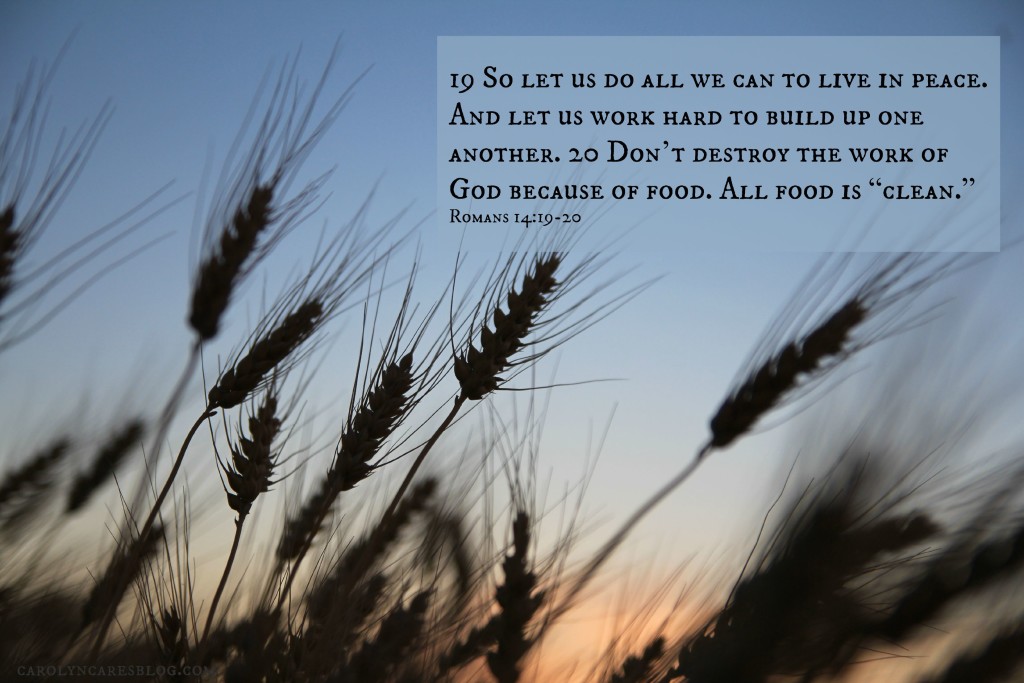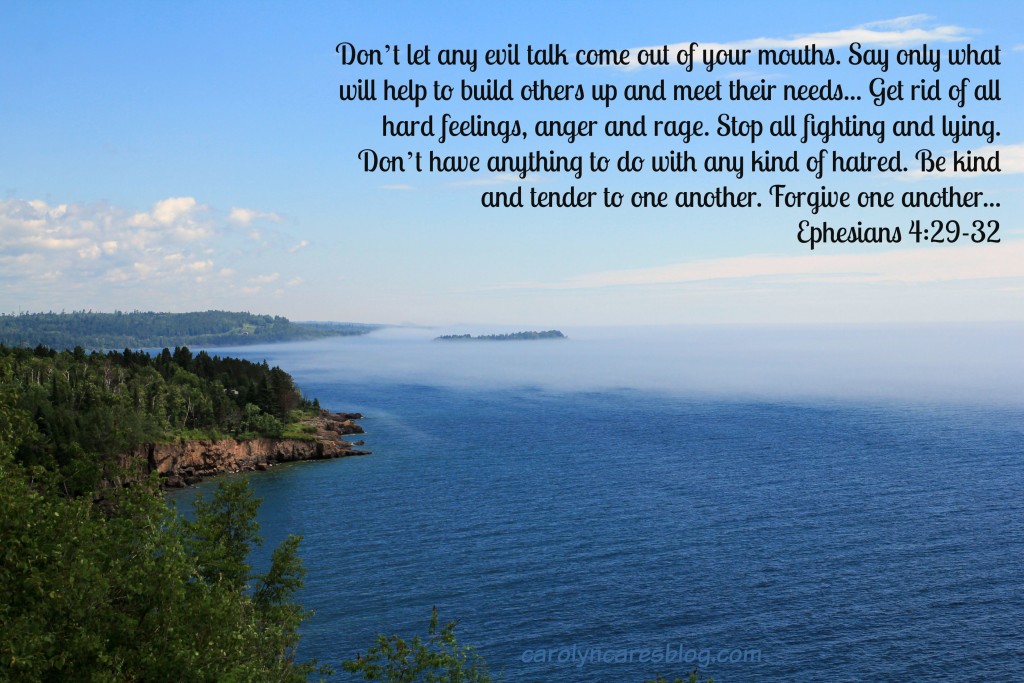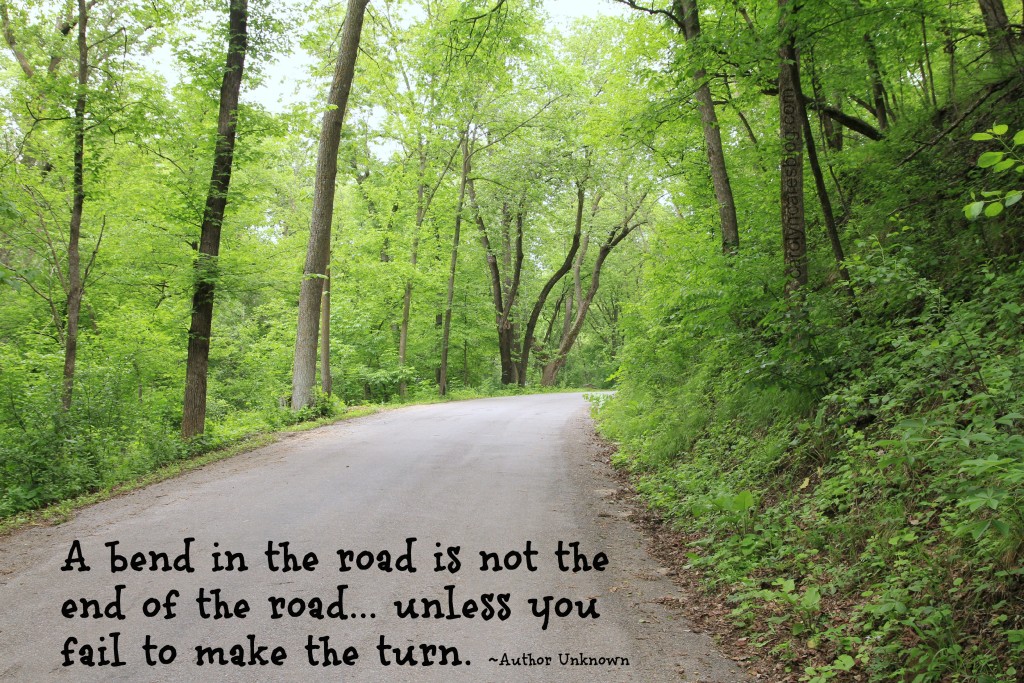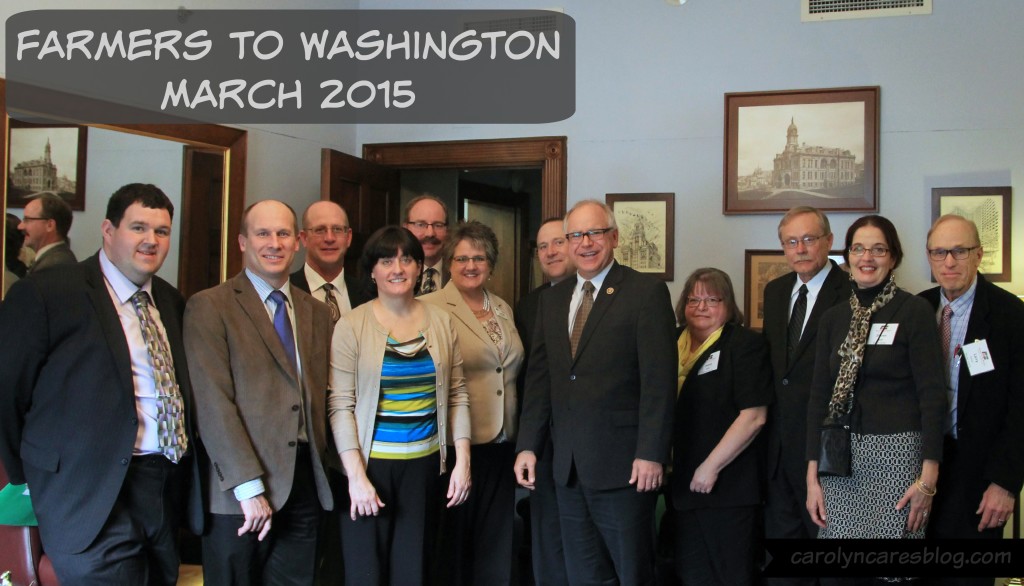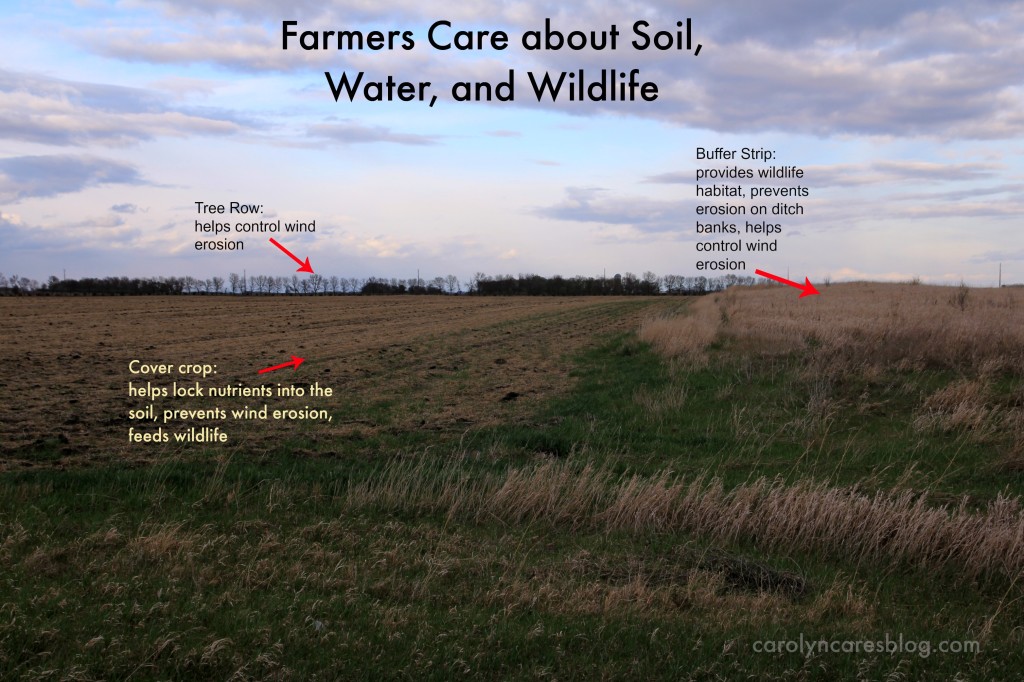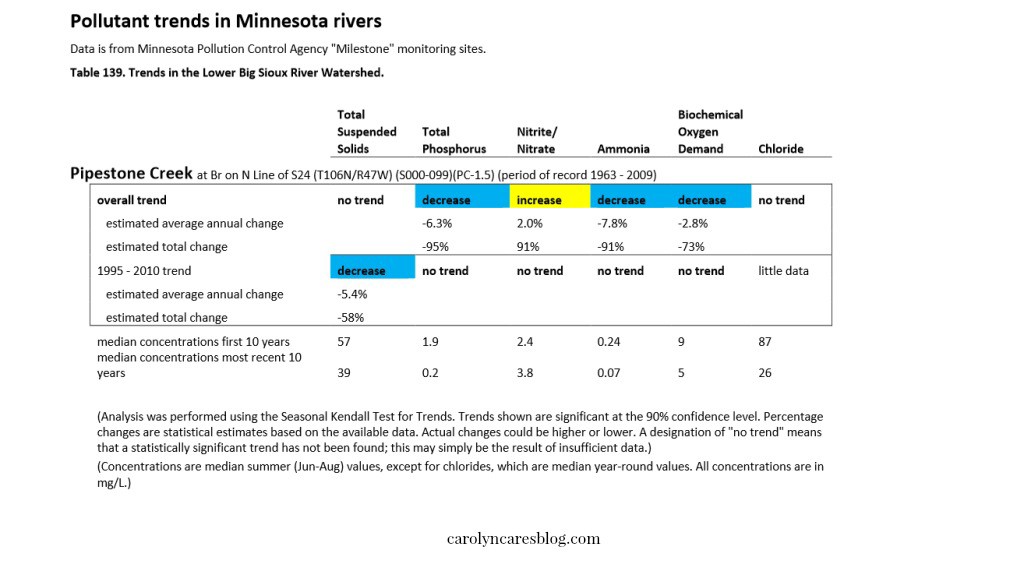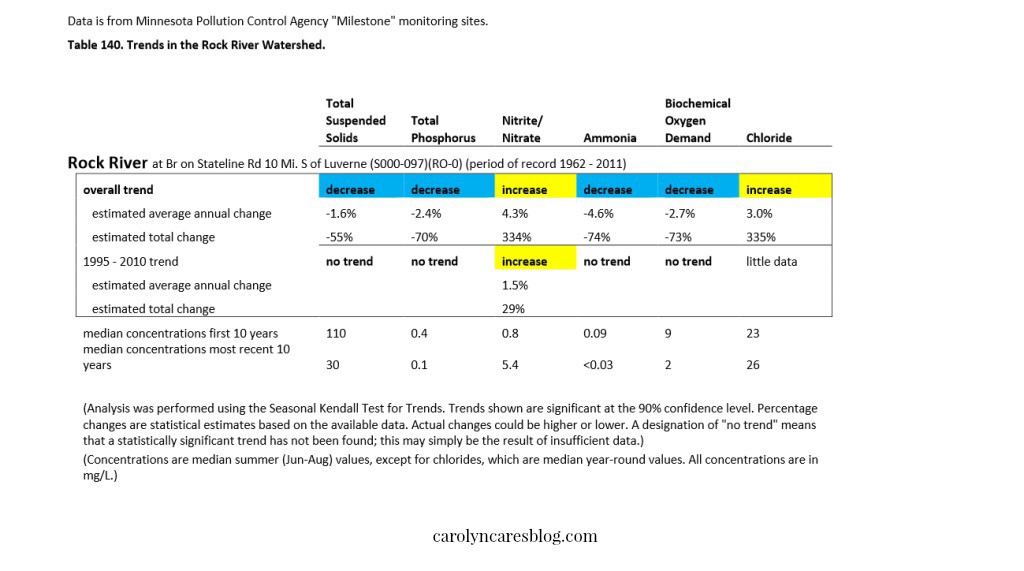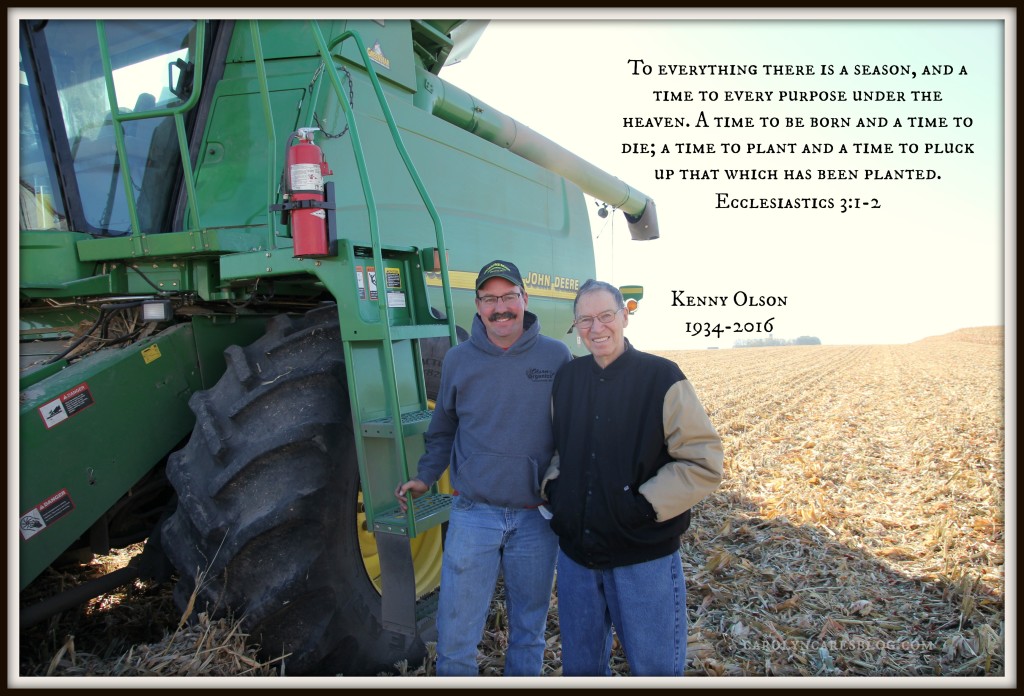
My father-in-law, Kenny Olson, passed away on January 22, 2016. I have been mulling over ways to pay tribute to the man who taught me so much about farming, about living out your wedding vows so faithfully, and handling life’s difficulties with humor and grace. In essence, he showed us all how to live out our faith.
These verses in 1 Corinthians 13 really sum up much about what I know about Kenny.
4 Love is patient, love is kind. It does not envy, it does not boast, it is not proud. 5 It does not dishonor others, it is not self-seeking, it is not easily angered, it keeps no record of wrongs. 6 Love does not delight in evil but rejoices with the truth. 7 It always protects, always trusts, always hopes, always perseveres.
When Jonathan and I were dating, we lived 3 hours from each other. This meant visits to the Twin Cities for Jonathan, or trips to the farm for me when we wanted to see each other. I was pretty nervous the first time I came to the farm and met Kenny and Lois. Thankfully, they were both so welcoming that I felt better immediately. I think he was pleased when we were engaged on his birthday in 1988.
Kenny and Jonathan were so patient teaching this city girl how to drive tractors, pick rocks, hoe weeds, and run to town for parts. If he was upset at me about mistakes, he never let it show. There was a time when Kenny and Lois had guests stop by for an evening of visiting while we were still working the ground after harvest. I volunteered to take the evening shift in the tractor to chisel plow so Jonathan and the girls could hang out at the farm and visit with the guests as well. I was on the far end of the field when all of a sudden, the chisel plow fell off the hitch, hydraulic hoses flying. Neither Jonathan nor Kenny had their two-way radios on, so my only choice was to drive back to the yard, leaving the chisel plow where it was. The guys were a little surprised when I drove in to the yard, and were happy I was not hurt, and that the hydraulic hoses had pulled cleanly out of the outlets on the back of the tractor and were in one piece. Neither one of them were upset over that incident. They just made sure the large pin was held in place with wire after that, so it couldn’t get jerked out of the hitch again.
My mother-in-law, Lois, lived with Multiple Sclerosis for 30 years. Kenny lived out the wedding vows, “in sickness and in health” so beautifully. He wasn’t real fond of driving into the Cities to take Lois to medical appointments, but he did it anyway. When Lois needed to use a wheel chair, he had a ramp built to get her in and out of their home, and made other modifications to make her life easier. When it came time for Lois to move to a nursing home in a neighboring town, he drove the 22 miles to pick her up for church every Sunday morning, then brought her to their house in town for the day before returning her to the nursing home in the evening. He spent many days visiting her when he wasn’t helping on the farm. I know it wasn’t all sunshine and roses dealing with Lois’ illness, but he chose to live out his love through patience and devotion to her. That has been a great example to all of us.
Kenny had a wonderful sense of humor. When we were looking for photos for our farm’s 100th anniversary celebration, we found many photos of Kenny and his brother having fun. Apparently, they liked to pull old Model T cars, without engines, behind other cars and run them up and down the road ditches. Kenny also enjoyed telling stories and having fun, even while hoeing out weeds in the soybean fields. He found a way to make the unpleasant tasks more tolerable with humor. The last month of his life, even after the dementia caused him to no longer recognize his family, he would still make people laugh with self-depreciating humor, and joking. He had such a pleasant nature, that everyone who worked at the memory care unit where he lived loved him.
Kenny has been such a great example of living out your faith, even when life gets hard. I feel so blessed to have been able to be a part of his family for the past 27+ years.
